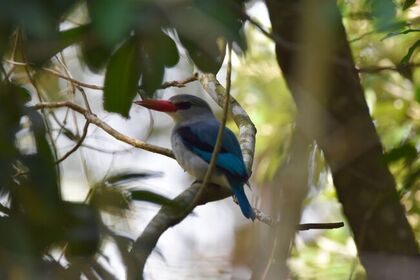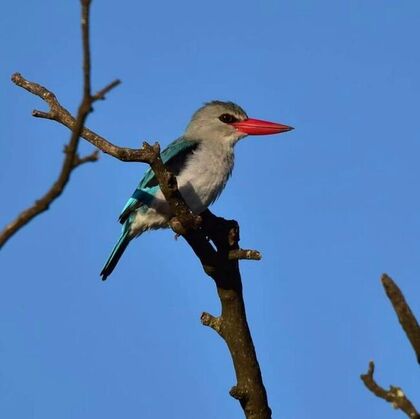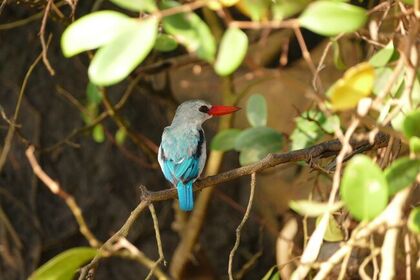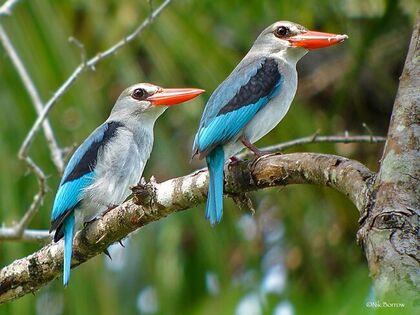Description
The most range-limited of the South African Kingfishers, the Mangrove Kingfisher lives almost exclusively in the Mangrove plants on the East Coast of Africa - a specialist in this sparsely distributed and threatened habitat - and is highly sought after by Birders. Junior Gabela can help you connect with this rare bird.
Distribution
You would think this bird with bright blue plumage and all-red beak would be easy to find, but they are shy and secretive and much of their Mangrove habitat is out-of-the-way and not easily reachable by car or on foot. The main Southern African population is migratory and spends the summer months in the Eastern Cape, in the Mangrove forests around the Transkei. If you can brave the heat and long drives on poorly-maintained roads in this somewhat-abandoned part of the country, these can be the easiest months to find this elusive bird as their call is very distinctive. But, luckily this population migrates in winter to Kwazulu-Natal where it spends the pleasant winter months in various Mangrove forests from Durban up to St Lucia, largely limited to rivers and estuaries, where they can be easily accessed from major airports in Durban and Richards Bay.
Where To Find
Within Zululand, the best place to go looking for the Mangrove Kingfisher is within the Umlalazi Nature reserve in Mtunzini which has a specific "Mangrove Walk" which winds through the mangrove estuaries and is the Winter home to various pairs of Mangrove Kingfishers. The mangrove walk is a good bet, but the nature reserve also consists of a road that runs adjacent to the Mangrove Forest where you can easily catch a sighting and photo of this sneaky Kingfisher without even leaving your car.
How To Id
Aesthetically, the Mangrove Kingfisher looks very similar to the Woodland Kingfisher. The all-red bill is the biggest differentiator but some rare Woodland kingfishers have mutated the same red bill. The next differentiator is a small dark patch behind the eye, but fortunately you won't have to worry about this if you are visiting in Winter as the Woodland Kingfishers will have all migrated north for the Winter, and would not normally be found in the Mangrove forests if they were around anyway.
Conservation Status
Unfortunately, the Mangrove Kingfisher is regarded as endangered due to the rapid destruction of the Mangroves after which they are named. Barely any Mangroves in Durban still exist and all through Africa, mangroves forests are destroyed for firewood and the river estuaries are planted with crops. The Mangroves also grow in the very limited tidal areas around the coastline and are thus very sensitive to the effects of global warming and changing sea-levels. Compounded with this, the migratory nature of the birds makes them sensitive to collisions with man-made structures and buildings, all leaving the Mangrove Kingfisher in a precarious position.
Book now!
The Mangrove Kingfisher is also one of our specialties at Zululand Birding with Junior Gabela. If this is one of the birds you are looking to check off your life-list, or want the opportunity to take up-close photographs of, Junior Gabela has in-depth knowledge about the birds seasonal behaviours, preferred nesting sites and recent sightings in the area. Just be sure to add the Mangrove Kingfisher to your wishlist when booking a safari and he will do his best to make it happen!




